Samsung Galaxy A54 vs Google Pixel 7a: Which One is Best?
The Google Pixel 7a and the Samsung Galaxy A54 are mid range smartphones that offer a balance between affordability and performance.
Despite their lower price tags, both phones offer impressive capabilities that are typically found in more expensive flagship devices.
By thoroughly testing and evaluating both phones, we aim to provide an informed verdict that can guide users in their purchasing decision. Ultimately, the winner will be the phone that excels in these categories, offering a well-rounded experience and value for the price.
So, if you’re in the market for an affordable smartphone that doesn’t compromise on features and performance, our comparison between the Google Pixel 7a and the Samsung Galaxy A54 will help you make an informed choice.
Samsung Galaxy A54 vs Google Pixel 7a: Video Review
Design and Appearance
Both the Google Pixel 7a and the Samsung Galaxy A54 offer sleek designs that cater to different aesthetic preferences.
The Google Pixel 7a draws inspiration from its flagship counterpart, the Pixel 7, incorporating certain design elements to create a distinctive look. One notable feature is the horizontal camera bar that stretches across the back of the Pixel 7a. This camera bar not only adds to the device’s visual appeal but also serves a practical purpose.
By adopting the horizontal camera bar from the Pixel 7, the Pixel 7a ensures that it does not wobble when placed on a flat surface with its screen facing up. In contrast, the Samsung Galaxy A54 incorporates protruding camera lenses, which results in a slight wobble when the phone is placed on a flat surface.
While flagship devices often incorporate high-quality materials like glass and metal, the Galaxy A54 and Pixel 7a opt for a more cost-effective approach by utilizing plastic in their construction. This choice allows the manufacturers to reduce production costs while still maintaining a visually appealing design.
In terms of screen protection, the Galaxy A54 features Gorilla Glass 5. Gorilla Glass 5 offers decent scratch resistance and some level of impact protection.
The Pixel 7a settles for Gorilla Glass 3, which is an older iteration of the Gorilla Glass technology. While Gorilla Glass 3 provides basic protection against scratches and minor impacts, it may not offer the same level of resistance as the newer versions.
The Galaxy A54 and Pixel 7a boast an IP67 rating for water resistance. This means that they are capable of withstanding submersion in up to 1 meter of water for a maximum duration of 30 minutes. This level of water resistance provides a certain degree of protection against accidental water splashes or brief exposure to water, but it is important to note that it is not as robust as the IP68 rating found in flagship devices.
Google Pixel 7a and the Samsung Galaxy A54 offer a range of color options to suit different preferences. The Galaxy A54 provides graphite, white, lime, and violet, offering a selection of classic and vibrant choices. Meanwhile, the Pixel 7a offers black, white, blue, and an exclusive Coral color, allowing users to express their style with elegance, playfulness, and uniqueness. Ultimately, the design and color options of these devices give users the freedom to choose a phone that reflects their individuality and taste.
Display
When it comes to display quality, the Galaxy A54 and Pixel 7a both excel with their bright and vibrant screens, providing users with an enjoyable viewing experience. However, there are notable differences to consider in terms of maximum brightness, display technology, and refresh rates.
The Galaxy A54 boasts a 6.4-inch display that impressed reviewers with its brightness. During testing with a light meter, it registered a maximum of 855 nits, which is bright enough to provide good visibility even in direct sunlight. This high level of brightness ensures that content on the screen remains clear and legible in various lighting conditions.
On the other hand, the Pixel 7a takes the brightness factor to another level with its 6.1-inch OLED display. Testing with a light meter revealed that the Pixel 7a reached a peak of 930 nits, surpassing the Galaxy A54 in terms of maximum brightness. This exceptional brightness allows for excellent visibility even in challenging lighting scenarios, making the Pixel 7a a great choice for outdoor usage.
While both phones offer bright displays, the refresh rate is where they differ significantly. The Pixel 7a features a notable improvement compared to its predecessor, as it incorporates a 90Hz refresh rate. This upgrade from the previous 60Hz rate results in smoother transitions and scrolling, enhancing the overall user experience by reducing motion blur and providing a more fluid feel.
In contrast, the Galaxy A54 takes a step further by offering an adaptive 120Hz refresh rate. This means that the phone automatically adjusts the refresh rate based on the content being displayed, ensuring optimal performance and smoothness. With the adaptive 120Hz refresh rate, the Galaxy A54 surpasses the Pixel 7a in terms of scrolling smoothness, making it particularly appealing to users who value a seamless display experience.
Hardware and OS
Performance is a crucial aspect to consider when comparing the Samsung Galaxy A54 and the Google Pixel 7a. In recent years, Samsung has faced the challenge of improving its performance, particularly in comparison to Google’s Tensor chips that debuted in the previous generation Pixel devices.
Last year’s Pixel 6a, powered by the Tensor chip, showcased better benchmark results than the Galaxy A53, which utilized the Exynos 1280 silicon. This outcome was embarrassing for Samsung, as the Tensor chips are more renowned for their machine learning capabilities rather than outright performance. The Pixel 6a’s superior performance indicated the need for Samsung to step up its game in this area.
To address this, the Galaxy A54 is equipped with an Exynos 1380 chipset, promising enhanced performance compared to its predecessor. Samsung claims a 20% CPU boost and a 26% GPU improvement over the Exynos 1280. This upgrade aims to provide a smoother and more responsive experience for users, delivering better overall performance.
The Google Pixel 7a comes equipped with 8GB of RAM and 128GB of internal storage. This configuration provides users with ample memory for multitasking and a generous amount of storage for apps, photos, and other data. However, it’s important to note that the Pixel 7a does not offer expandable storage options via microSD, limiting users to the provided internal storage capacity.
The Samsung Galaxy A54 also offers 8GB of RAM, but it provides more flexibility in terms of storage options. The device is available in two storage variants: 128GB and 256GB. Furthermore, the Galaxy A54 offers expandable storage support via a microSD card slot, allowing users to add up to 1TB of additional storage. This gives users the freedom to store a vast amount of data, including high-resolution media files, without worrying about running out of space.
Both the Pixel 7a and the Galaxy A54 run on Android 13, which offers the latest features and improvements in terms of user experience and security. While both devices benefit from the same Android version, it’s worth noting that the Pixel 7a is entitled to three years of Android OS updates, while the Galaxy A54 promises four major Android updates. This means that the Galaxy A54 may receive Android updates for a longer period, potentially offering access to newer features and optimizations.
Cameras
Samsung equips the Galaxy A54 with a high-resolution 50MP sensor, the same one found on their flagship devices like the Galaxy S23 and Galaxy S23 Plus. This sensor allows for capturing detailed and sharp images with excellent clarity. Accompanying the main shooter, the Galaxy A54 also features a 12MP ultrawide lens that enables capturing a wider field of view, ideal for landscapes or group shots.
Additionally, a 5MP macro sensor is included, allowing users to take detailed close-up shots of small subjects. For selfie enthusiasts, the Galaxy A54 offers a 32MP front-facing camera for capturing high-resolution self-portraits.
Google takes a different approach with the Pixel 7a’s camera setup. The entire camera system has been upgraded from the Pixel 6a, offering improved photography capabilities. The Pixel 7a features a 64MP main camera, delivering enhanced image quality and sharper details.
Accompanying the main shooter is a 13MP ultrawide angle lens, providing users with a wider perspective for capturing expansive scenes. It’s worth noting that the Pixel 7a does not have a dedicated macro sensor like the Galaxy A54.
However, the device compensates with its advanced computational photography capabilities, which allow for detailed close-up shots without the need for a separate macro lens. For selfies, the Pixel 7a offers a 13MP front-facing camera, capable of capturing clear and vibrant self-portraits.
Battery and Charging
The Pixel 7a manages to offer extended battery life, even with a slightly more compact battery compared to its predecessor. In a continuous web browsing test over cellular connectivity, the Pixel 7a lasted an impressive 10 hours, surpassing the average smartphone time by around 10 minutes. This result is a significant improvement of about 3.5 hours compared to the Pixel 6a from the previous year. Google deserves recognition for achieving such a substantial enhancement, allowing users to enjoy their device for longer periods without needing to recharge.
Tthe Galaxy A54 delivers a notable battery performance as well. However, specific test details for the Galaxy A54’s battery life are not provided in the given context. It’s important to note that battery life can vary based on usage patterns, settings, and other factors.
In terms of charging capabilities, the Galaxy A54 offers faster wired charging compared to the Pixel 7a. With 25W charging support, the Galaxy A54 enables quicker charging times compared to the Pixel 7a’s 18W charging speed. However, the Pixel 7a boasts a feature not commonly found in midrange phones — wireless charging. This means that users with a wireless charging pad at home can conveniently charge their Pixel 7a without the need for cables. In contrast, the Galaxy A54 lacks wireless charging functionality.
Price
The Samsung Galaxy A54 became available for purchase in April, offering consumers a midrange smartphone option at a price of $449. It’s important to note that Galaxy A54 deals may further reduce the price, providing potential discounts and making the device even more affordable for interested buyers. These deals could potentially make the Galaxy A54 an attractive option for those seeking a feature-packed smartphone without breaking the bank.
But, the Google Pixel 7a comes with a slightly higher price tag compared to its predecessor. Priced at $499, the Pixel 7a sees a $50 price increase for U.S. shoppers. While the price hike may disappoint some, it’s worth considering the improvements and enhancements offered by the Pixel 7a over last year’s model. These improvements, including upgraded camera hardware, better battery life, and a more powerful processor, contribute to the increased cost of the device.
Conclusion
Ultimately, the choice between the Samsung Galaxy A54 vs Google Pixel 7a comes down to personal preferences and priorities. Both phones offer distinct features, strengths, and trade-offs within the midrange segment.
Users seeking a feature-rich camera system and a more affordable price may lean towards the Galaxy A54, while those who prioritize software updates, a brighter display, and wireless charging may favor the Pixel 7a despite its slightly higher price point.
You can also check out the best-selling Smartphones on Amazon:










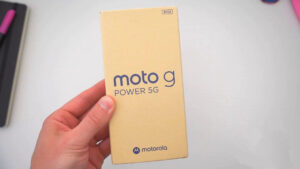
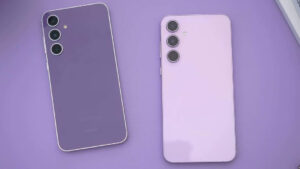
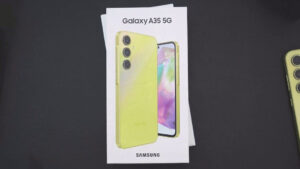
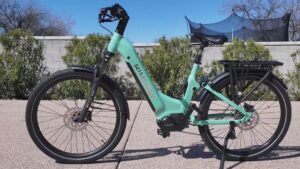


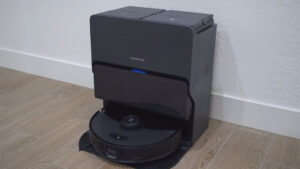
1 thought on “Samsung Galaxy A54 vs Google Pixel 7a: Which One is Best?”